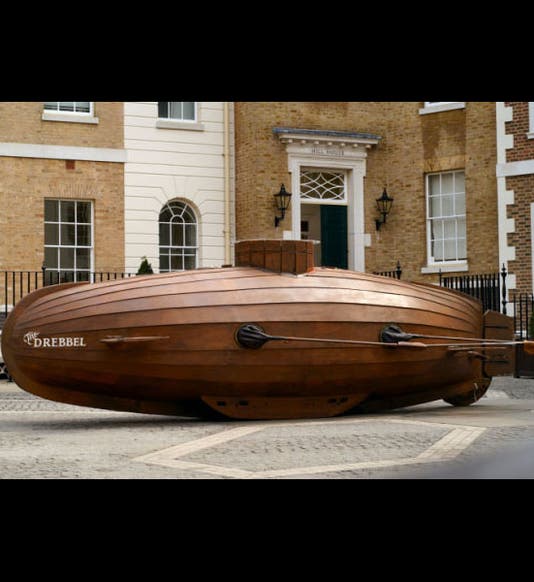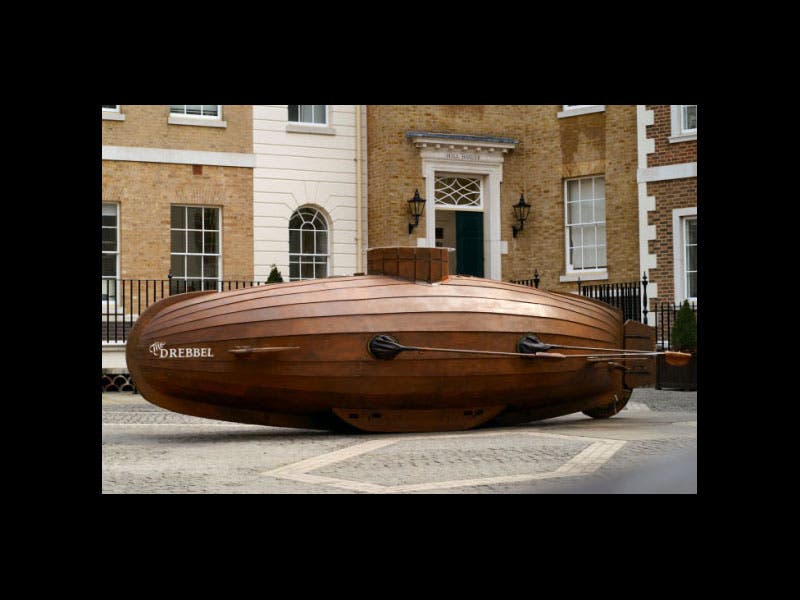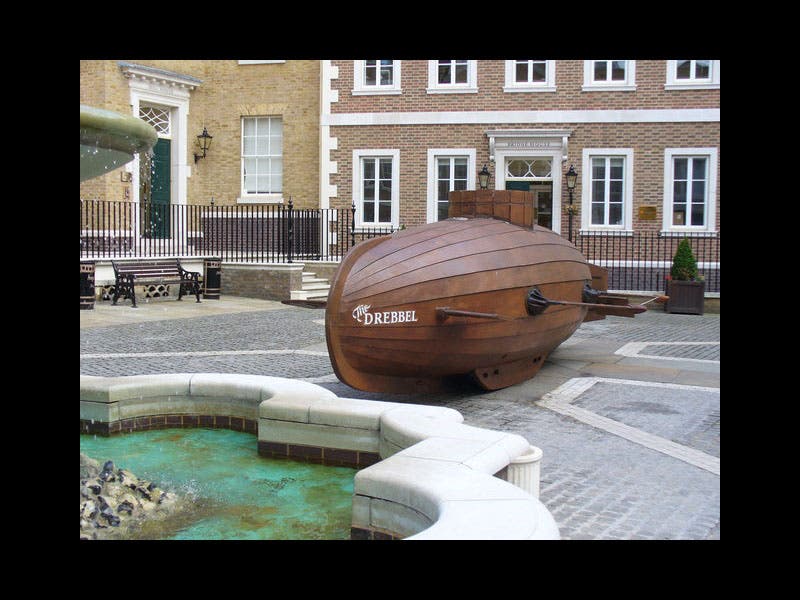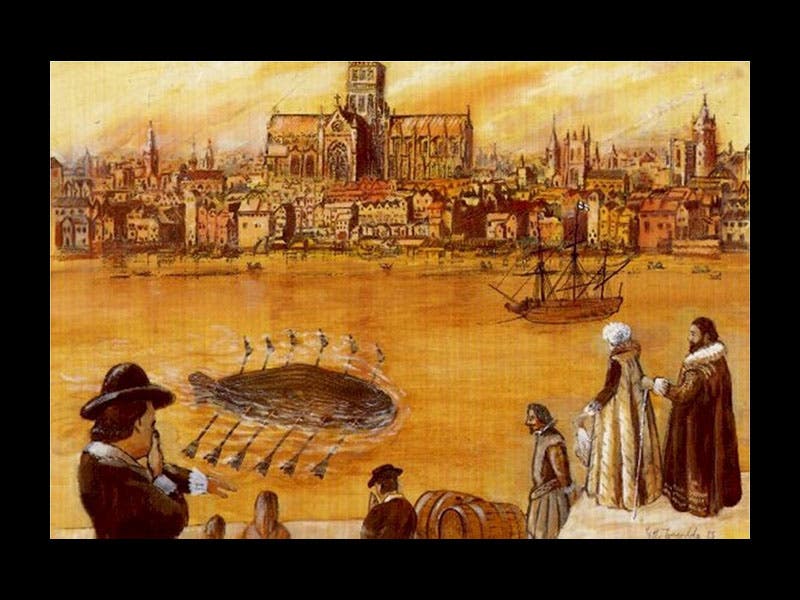Scientist of the Day - Cornelis Drebbel
Cornelis Drebbel, a Dutch inventor, died Nov. 7, 1633, at the age of about 61; we do not know his date of birth. Drebbel invented and built a variety of contraptions in Holland, including several perpetual motion machines and clocks (none of which, oddly enough, seem to be still working today), as well as a self-regulating furnace. As Drebbel acquired some renown, he was invited to London in 1604 by the court of James I. His splashiest invention in England was a submarine, the first ever built, launched around 1620 and operated successfully on the River Thames. He apparently built several of these, of different sizes. His submersibles were built of wood sealed with grease, propelled by oars that came out the side through leather seals; they were able to stay submerged for hours because Drebbel had supposedly discovered a way to free oxygen from canisters of saltpeter that he stashed on board. In 2002, for a BBC special called "Building the Impossible," a reduced-size replica of a 4-oar Drebbel submarine was built and successfully navigated on a lake near Windsor Castle. This same replica was displayed at a special exhibition at the Royal Navy Submarine Museum in Gosport in 2010. Its normal resting spot is in a courtyard near Richmond Bridge in west London, where the photographs above were taken (first and second images).
The watercolor sketch above (third image) was made long after the fact, which might explain why it depicts a 12-oar submarine, which Drebbel never built. We have no contemporary representations at all of Drebbel’s submarine, in action or ashore. But we have a number of woodcut portraits of Drebbel himself, all of which show the same recognizable face, which is not always the case (fourth image).
Dr. William B. Ashworth, Jr., Consultant for the History of Science, Linda Hall Library and Associate Professor, Department of History, University of Missouri-Kansas City. Comments or corrections are welcome; please direct to ashworthw@umkc.edu.










